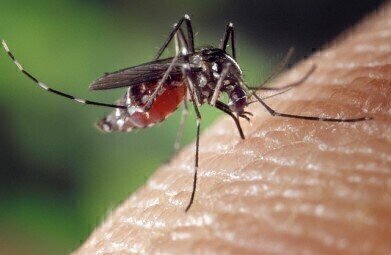Laboratory Products
Has the Zika Virus Become Deadlier?
Oct 11 2017
When it was first discovered in 1947, the notorious Zika virus was more or less harmless. It then morphed into something more menacing, responsible for severe brain abnormalities in thousands of children across the world.
The wrath of genetic mutation
So how did Zika manage to go from an 'under the radar' virus to a global world health scare? According to Chinese researchers the evolution was triggered by a single gene mutation, which likely took place in 2013. Reporting their findings in the journal Science, the team explain that the genetic change is located at position S139N of the virus's RNA, and has empowered it with a newfound talent for killing developing brain cells.
The rapid mutation of the virus is also the reason why there was no available vaccine. Instead, scientists were forced to scramble for information on the new strain of Zika. This left the world defenceless when it came to protecting human cells against the wrath of S139N.
A dangerous amino acid tweak
To pinpoint the mutation the scientists compared Cambodian Zika virus samples from 2010 to those collected in 2015. They found that the recent strain exhibits seven changes to the genetic code, with each using a single amino acid to alter the surface proteins of the virus. Ultimately, this makes it far more dangerous than its predecessor.
They then tested their theory on mice by creating multiple clone versions of the 2010 Zika virus. Both foetuses and newborns were then infected with the strain, and sure enough the S139N mutation quickly started to destroy brain cells.
“The fact that this change in behaviour can be almost wholly attributed to a single amino acid change in one of the virus’ surface proteins is remarkable,” comments Professor Jonathan Ball, from Nottingham University. “This data, as well as evidence from other viruses like Ebola, shows us that the smallest of genetic changes can have a major impact on virus behaviour.”
Scientists scramble to develop vaccine
In 2016 the Zika epidemic was declared an international emergency for nine consecutive months. While the state of crisis was eventually lifted, Zika remains a threat for many millions of people around the world. The good news is there are currently two vaccines in the works. Both appear to provide full protection to mice, which means human trials could be on the horizon.
From China to the UK, universities play a critical role in powering medical research across the globe. For a behind the scenes glimpse at one of Britain's top institutions don't miss, 'Wide Eyed with Wonder: University of Nottingham Open their Doors to the Community.'
Digital Edition
Lab Asia 31.2 April 2024
April 2024
In This Edition Chromatography Articles - Approaches to troubleshooting an SPE method for the analysis of oligonucleotides (pt i) - High-precision liquid flow processes demand full fluidic c...
View all digital editions
Events
Apr 28 2024 Montreal, Quebec, Canada
May 05 2024 Seville, Spain
InformEx Zone at CPhl North America
May 07 2024 Pennsylvania, PA, USA
May 14 2024 Oklahoma City, OK, USA
May 15 2024 Birmingham, UK


















